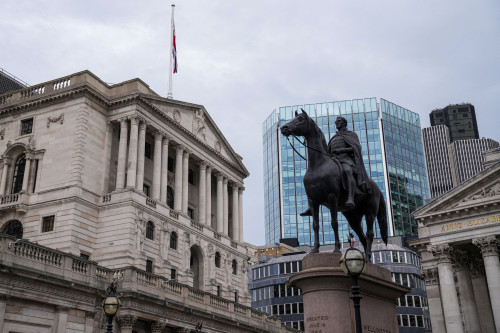
With only 22,000 new jobs added in August, unemployment is now in a downward trend. Many financial advisors are ‘getting serious’ about a possible half point rate cut to combat a vulnerable economy. As the week ended, indexes fell, with the Dow Jones Industrial Average dropping 220 points. Both the S&P 500 and Nasdaq were slightly lower. After Friday’s Jobs release the 10-year Treasury bond yield edged up from 4.2% to 4.3% . “The labor market is continuing to slow to a stall speed,” said Rebecca Patterson, an economist and senior fellow at the Council on Foreign Relations. “The economic outlook is incredibly uncertain. Companies are being very cautious about adding personnel.” Sectors with the severest job losses included business services, financial, manufacturing and hospitality. The bond market was very active at week’s end as much pivoting of capital shifted into bonds from equities with 10-year Treasure yield creeping higher.
The Nasdaq Composite ‘touched’ to another record high on Monday, up 0.5% to 21798, the 21st record of the year. Both the Dow Jones and S&P 500 were up 0.3% and 0.2% respectively. After the August Jobs report, a September rate cut is almost certain, with it being a quarter or half point cut. “It’s going to take a lot of rate cuts to get economic activity revitalized, because the economy is just not as interest rate sensitive as it has been in the past,” said Eric Teal, chief investment officer at Comerica Wealth Management. Again Tuesday all three indexes hit new records on the same day with the Dow Jones, up 196 points, followed by the S&P 500, up 0.3% and the Nasdaq up 0.4. In the 12 months ended in March 2025, “The Bureau of Labor Statistics revealed that the U.S. economy had 911,000 fewer jobs than had been reported,” a serious case of misrepresentation, and all the more compelling for a ‘serious rate cut.’ “Investors are looking forward to that rate-cutting cycle getting started by the Fed,” said Jeff Schulze, head of economic and market strategy at ClearBridge Investments.
Wednesday’s market stayed strong, again hitting new highs with the S&P 500 finishing at its 23rd record high of the year, and the Nasdaq, up a slight bit, 0.1% to a record. The Dow Jones lost 230 points weighted down by Apple’s correction. Gold is trading at $3.672.00 a troy ounce, showing no indication of softening as geopolitical tensions mount.
Tumbling Lumber prices, declining building permits… have seen lumber futures fall 24%. Currently at $526.50 per thousand board feet and weakening lumber inventories are at peak highs, overbalancing the market. Since August 1st, framing lumber usage has fallen 12% with the trend worsening. “Inferior” the 3rd biggest North American producer “has scaled back output by 12% in the U.S. “Domtar” another huge lumber producer in Arkansas, has severely cut production, and permanently terminated nearly a 1,000 employees at its U.S. and Canadian facilities. “We anticipate further closures or curtailments,” said Truist Securities Michael Roxland. In July 2025, U.S. manufacturing fabrication was down 3.4%, following months of demand decline. The building of America is stagnating, a warning that economic concern is heightening.
RUMBLINGS ON THE STREET
Tani Fukui, a senior director at MetLife Investment Management, (referencing a scenario in which economic growth slows while inflation rises), WSJ – “There’s a little bit less anxiety about the stagflation crisis.”
Ken Griffin, CEO of Citadel, Barron’s – “Ultimately the independence of the Fed is of the utmost importance to the American and global economy.
Jed Kelko, senior fellow at the Peterson Institute for International Economics, WSJ – “The slowdown in immigration means that we don’t need as many jobs to help the labor market in balance as we did a year or two ago.”



